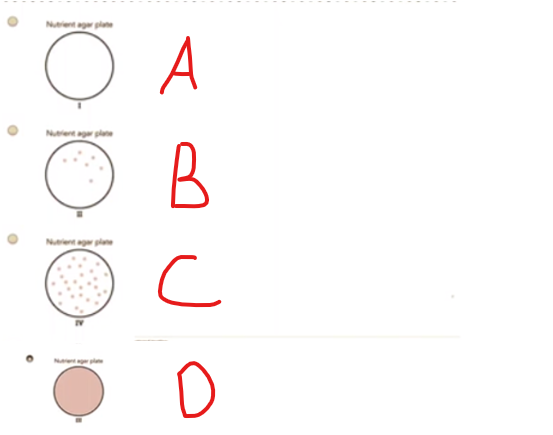Which of the following is an example of a biological macromolecule?
A. Nucleic acid, Protein
B. Monosaccharide
C. Amino and
D. Protein
For those aiming to excel in their ATI TEAS test and secure admission into their desired nursing program, ExamGates offers an invaluable resource. Our platform features practice questions meticulously crafted by tutors who have previously aced the exam themselves. With ExamGates, you can access content that is 100% relevant to the test, accompanied by vivid images and illustrations. Additionally, our platform provides comprehensive explanations for both correct and incorrect answers, empowering you to fully grasp the material and optimize your study efforts. Take the first step towards your nursing aspirations with ExamGates today.
Biological macromolecules are large organic molecules such as carbohydrates, lipids, nucleic acids, and proteins. They are built from smaller molecules, which are linked commonly by covalent bonds, and these can be broken down.
Therefore, the Correct Answer is A.
More Questions on TEAS 7 Science Exam 5
Question 1:
Which of the following hormones regulates blood calcium levels?
A. Parathyroid hormone
B. Growth hormone
C. Norepinephrine
D. Melatonin
The Correct Answer is A.The parathyroid hormone (PTH) from the parathyroid glands is important in serum calcium regulation. It increases blood calcium levels by stimulating osteoclasts to break down bone and release calcium into the bloodstream. PTH also enhances the absorption of calcium from the intestines and the kidneys.
Question 2:
Which of the following organelles is the site of intracellular digestion?
A. Mitochondria
B. Lysosomes
C. Centrosomes
D. Ribosomes
The Correct Answer is B.Lysosomes are membrane-bound organelles that contain lysozymes that are responsible for breaking down waste materials and cellular debris through intracellular digestion. This process helps maintain cellular health and homeostasis by recycling and degrading cellular components.
Question 3:
Which of the following nucleotides is only found in RNA?
A. Guanine
B. Thymine
C. Uracil
D. Adenine
The Correct Answer is C.Uracil is the nucleotide that is only found in RNA. The other nucleotides are found in both DNA and RNA
Question 4:
Escherichia cell is plated on nutrient agar plates that each contain a different type of antibiotic. The shaded area represents growth of the bacteria. Which of the following plates contains bacteria that were most resistant to the antibiotic

A. A
B. B
C. C
D. D
The Correct Answer is C.This is the plate with the most growth despite the presence of antibiotic cover.
Question 5:
The hip is an example of which of the following type of joints?
A. Ball-and-socket
B. Pivot
C. Gliding
D. Hinge
The Correct Answer is A.The hip joint is an example of a ball-and-socket joint. The hip joint is formed by the articulation of the head of the femur with the acetabulum of the pelvis. The rounded head of the femur (ball) fits into the cup-shaped acetabulum (socket), allowing for a wide range of motion in multiple planes.
Question 6:
A represents atomic mass and 2 represents an atomic number, which of the following describes an atom after a proton is emitted?
A. A-1,2-1
B. A-1,2+1
C. A,2-1
D. A+1,2-1
The Correct Answer is A.This is because when a proton is emitted from an atom, the atomic mass decreases by one unit, and the atomic number decreases by one unit. The atomic mass is the sum of protons and neutrons in the nucleus, and the atomic number is the number of protons in the nucleus. Therefore, if a proton is lost, both numbers decrease by one.
Question 7:
A slice of apple left on a table slowly goes brown due to an enzymatic reaction. Dipping the apple slice in lemon juice prevents it from browning Which of the following best explains this result?
A. Lemon juice has enzymes which reverse the browning reaction
B. Lemon juice has a pH which inactivates the enzymes
C. Lemon juice functions to bleach the brown material
D. Lemon juice functions to dilute the brown material
The Correct Answer is B.Browning of the apple surface is due to the action of the enzyme polyphenol oxidase. Lemon juice is acidic and lowers the pH of the apple's surface. This inactivates the enzyme polyphenol oxidase, which works best at a neutral pH. This in turn reduces the browning action on the apple.
Question 8:
Which of the following respiratory structures is affected by a disease that disrupts gas exchange, such as emphysema?
A. Trachea
B. Secondary branch
C. Primary bronchi
D. Alveoli
The Correct Answer is D.Question 9:
Which of the following characteristics of water helps explain why coastal areas experience less dramatic temperature changes during the day?
A. Water has a high specific heat capacity
B. Water is a versatile solvent
C. Water forms covalent bonds with other water molecules
D. Water's adhesive properties prevent evaporation
The Correct Answer is A.Water has a high specific heat capacity, which means it can absorb and store a large amount of heat energy without significantly changing in temperature. This helps moderate the temperature fluctuations of the air near the coast, as water can store heat during the day and release it at night, or vice versa.
Question 10:
The "gray matter of the brain is largely made up of which of the following?
A. Neuron cell bodies
B. Meninges
C. Neuron cell axons
D. Corpus callosum
The Correct Answer is A.The gray matter of the brain primarily consists of neuron cell bodies, along with dendrites, glial cells, and unmyelinated axons. It appears gray because it lacks the white fatty myelin sheath that covers many nerve fibers.